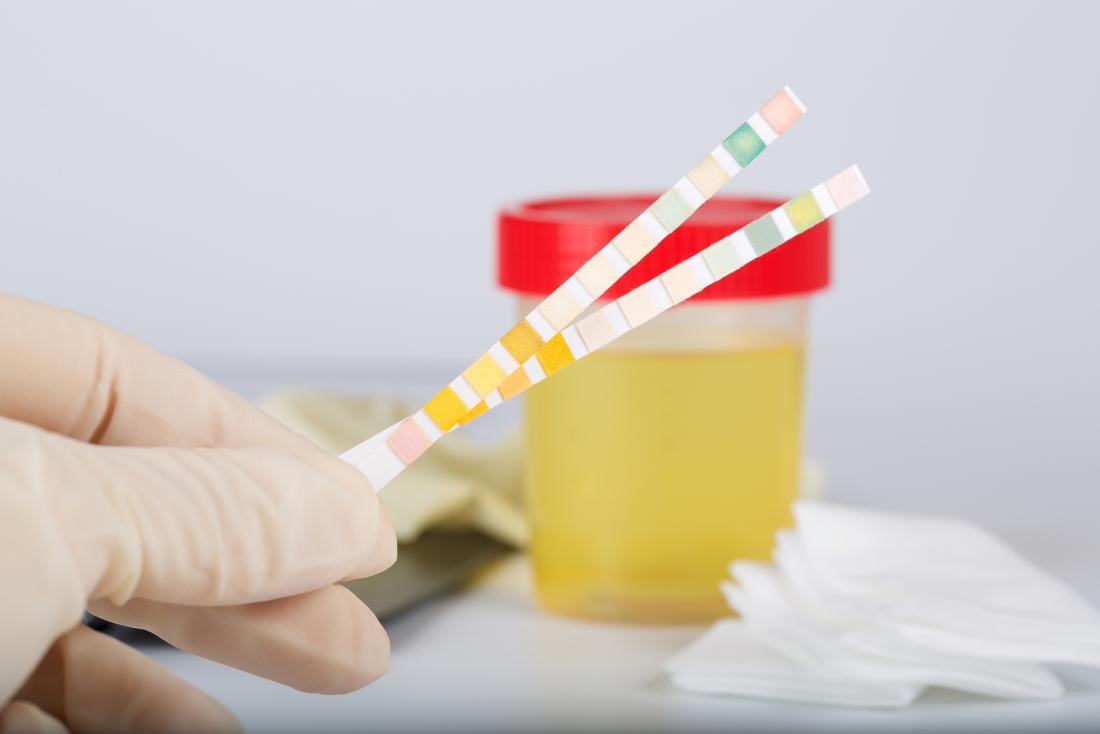
Urine tests: glycosuria and ketonuria values
Checking glycosuria and ketonuria can be performed directly by the patient. This is a unique test, as most of the reagent cards used to perform these tests are now able to perform both tests on the same stick
This check is done on urine by wetting the tip of the stick.
The detection times are sufficiently short, in the order of 1-2 minutes.
Glycosuria and ketonuria, three types of test can be carried out
- instantaneous;
- fractionated;
- 24-hour.
Instantaneous glycosuria
Instantaneous glycosuria, are the most commonly used, can be performed at any time of the day, without too much sacrifice.
It is usually advisable to perform them before the three main meals.
This test gives a fairly accurate summary view of the day’s progress, and allows us to make any corrections on Insulin doses or diet for the following days.
Fractional glycosuria
These are recommended at intervals of several weeks.
They are performed on urine collected between one meal and the next, over a 24-hour period.
They tell us whether our diet is correct or requires adjustment, especially with regard to the distribution of starches and sugars.
In each fraction we need to check
- the volume, using a graduated container;
- the glycosuria (after mixing the urine well);
- the glycosuria in relation to volume: volume (ml) * glucose (g/l) / 1000.
24-hour glycosuria
This test can be performed with the same deadline as the previous ones, perhaps by combining the different 24-hour fractionated urine collections together.
It gives an indication of the overall progress during the day on both the adequacy of insulin doses and the quality of nutrition.
The night before urinate and discard urine.
In the following hours, collect all the day’s urine, including the evening urine (the latter at the same time as the discarded urine) in one container.
It is then necessary to check
- the volume, by means of a graduated container;
- the glycosuria (after mixing the urine well);
- the glycosuria in relation to the volume: volume (ml) * glucose (g/l) / 1000.
This check helps us not only to understand the trend of glycaemia in the daily average, but also the amount of urine excreted during the day.
Indeed, in the presence of some decompensation, it is easy to notice an increase in urine in the 24 hours (over two litres).
Read Also
Emergency Live Even More…Live: Download The New Free App Of Your Newspaper For IOS And Android
Colour Changes In The Urine: When To Consult A Doctor
Paediatric Urinary Calculus: What It Is, How To Treat It
High Leukocytes In The Urine: When To Worry?
The Colour Of Pee: What Does Urine Tell Us About Our Health?
Pee Colour: Causes, Diagnosis And When To Worry If Your Urine Is Dark
Haemoglobinuria: What Is The Significance Of The Presence Of Haemoglobin In Urine?
What Is Albumin And Why Is The Test Performed To Quantify Blood Albumin Values?
What Is Cholesterol And Why Is It Tested To Quantify The Level Of (Total) Cholesterol In The Blood?
Gestational Diabetes, What It Is And How To Deal With It
What Is Amylase And Why Is The Test Performed To Measure The Amount Of Amylase In The Blood?
Adverse Drug Reactions: What They Are And How To Manage Adverse Effects
Albumin Replacement In Patients With Severe Sepsis Or Septic Shock
Provocation Tests In Medicine: What Are They, What Are They For, How Do They Take Place?
What Are Cold Agglutinins And Why Is The Test Performed To Quantify Their Values In The Blood?
Why Is Pee Yellow? The Color Of Urine And The Role Of Urobilin
Sugars: What Are They Good For And When Are They Bad For Us?


